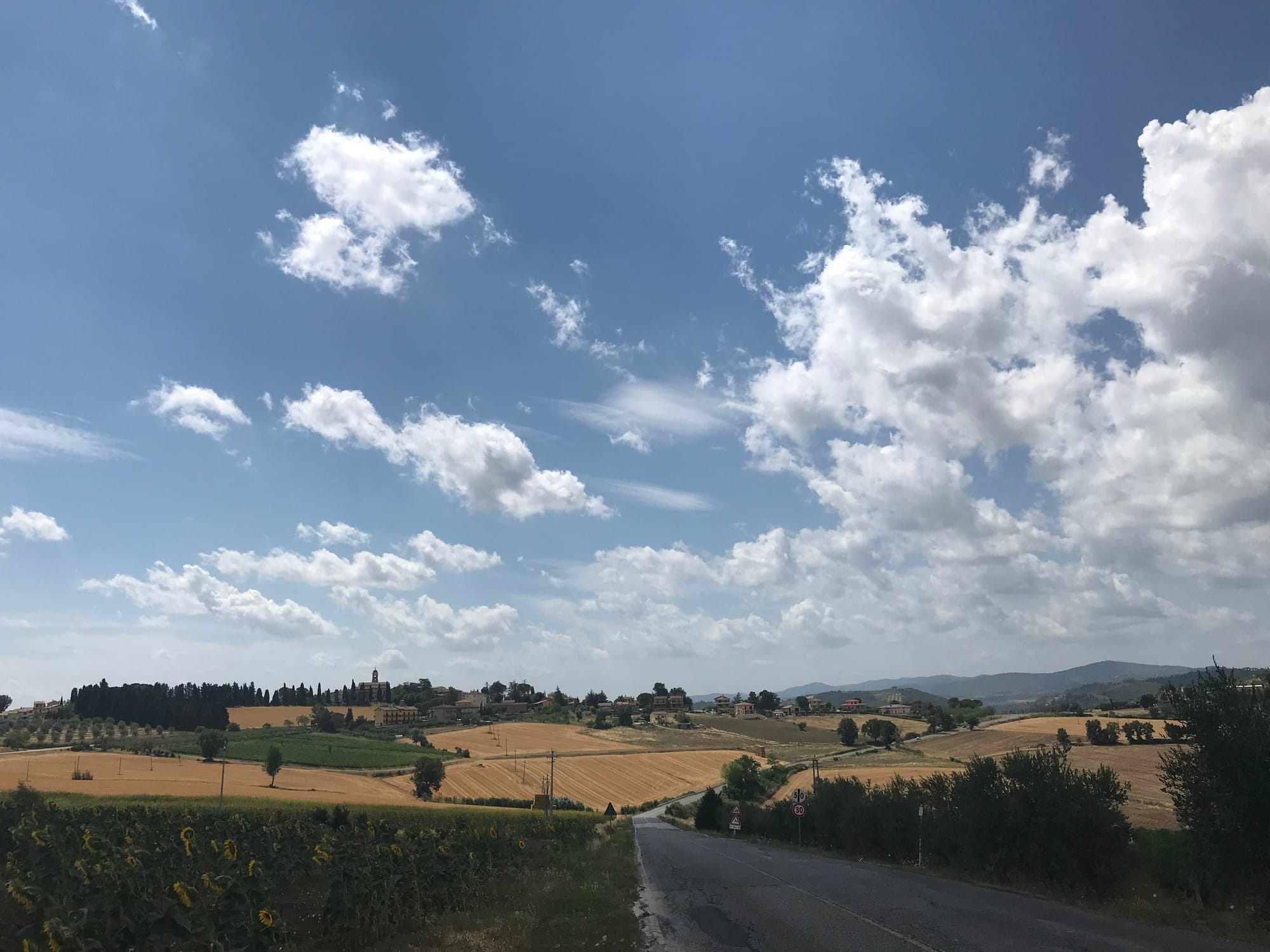Umbria: Green Heart of Italy
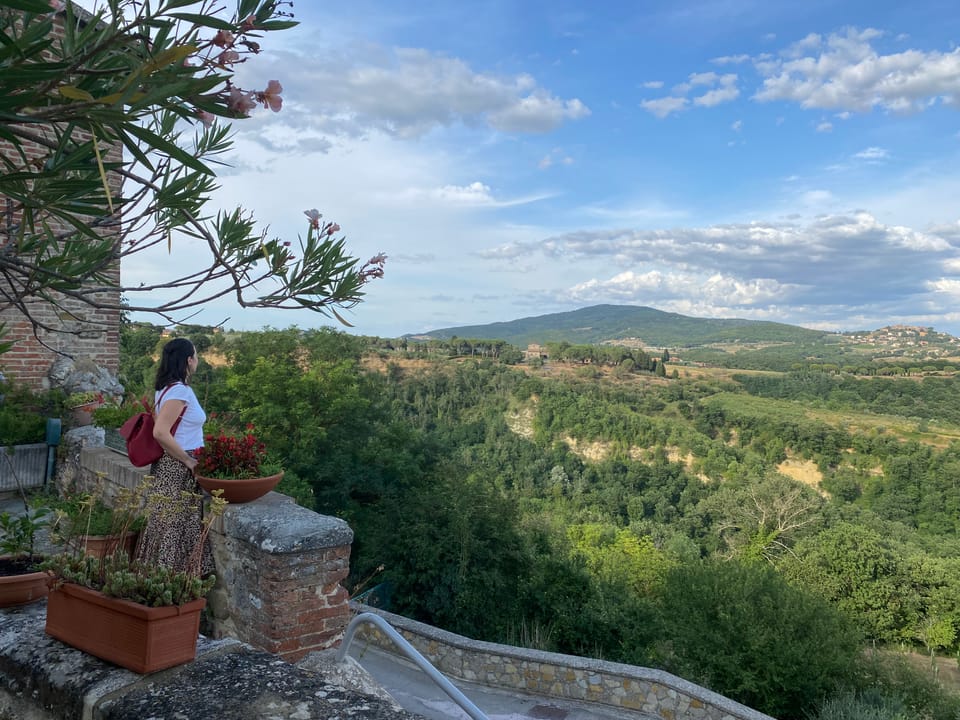
It is a truth universally acknowledged that Umbria is the new Tuscany, less crowded, lesser known, slower-paced, yet sophisticated and charming. Everything costs just a fraction of the price compared to Tuscany, and the crowds are far less disheartening there. So, in case you find the prospect of Florence in peak summer rather daunting, just keep on driving and visit Umbria. If you are someone in search of relief, who appreciates the quiet of countryside living, Umbria and its countless villages and towns are exactly the right places where the essence of Italian lifestyle is easiest to experience. Mind you, these are not backwater, undeveloped places, only more tranquil, more affordable, and less famous destinations than Milano, Rome, or God forbid, Venice. As you probably know by now, sometimes the most magical things happen, when we don't follow the others.
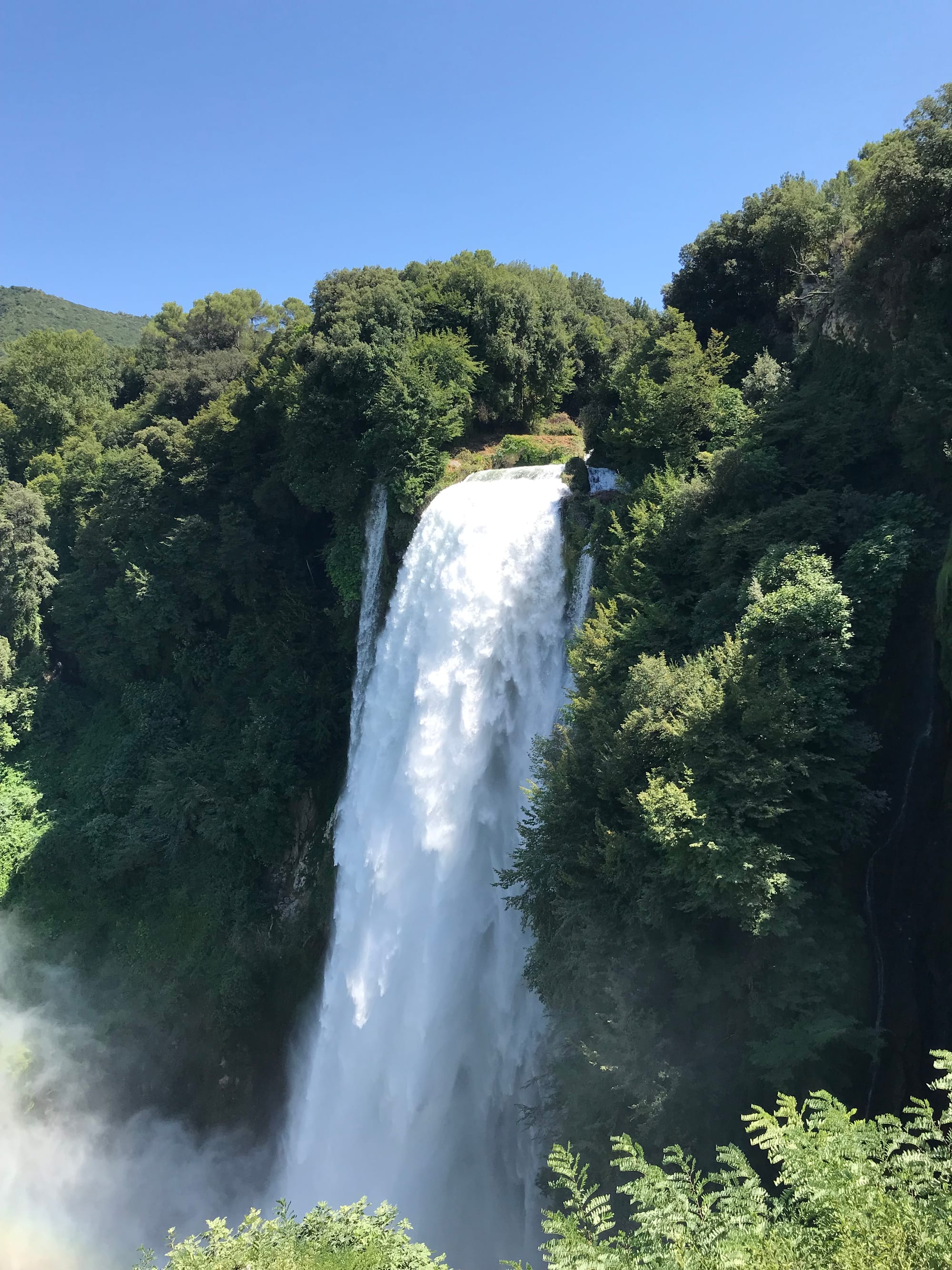
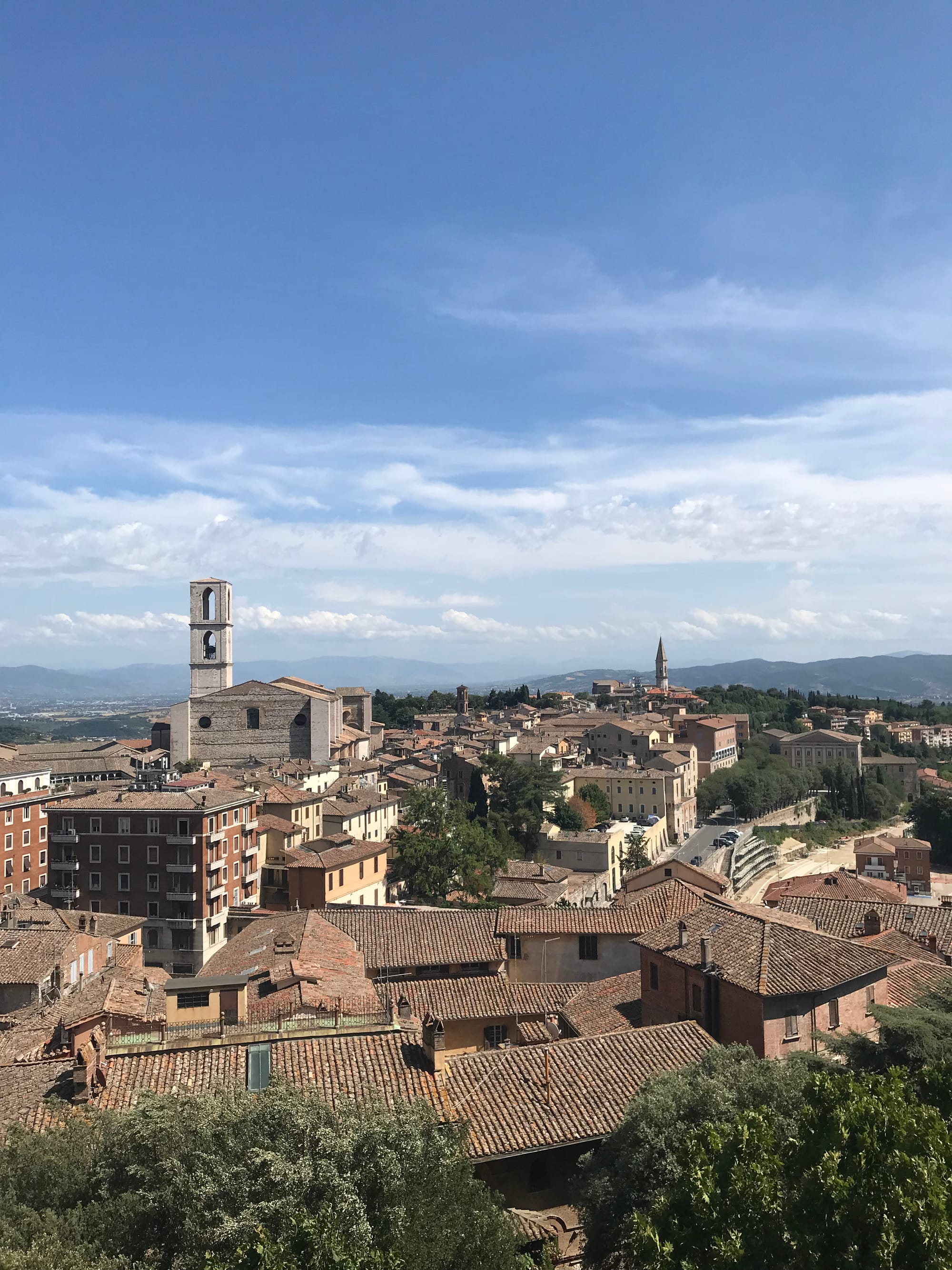
Umbria in its wild beauty, sharing the same good genes with its more glamorous cousin Tuscany, is far from a secret destination. Nowadays you will hear people talking a lot about "discovering" Abruzzo or Marche as the unsung hero regions of Italy. However, the Umbrian countryside is seemingly still not tired of tourists, perhaps because mass tourism in all its ugliness hasn't damaged it yet. The people are genuinely serene, open, hospitable, and interested in foreigners. As if there is mutual respect and appreciation between them and the tourists, the Umbri know that the tourists bring liveliness and business to their tranquil part of the world. And tourists know better than to make a mess of this beautiful corner of the world.
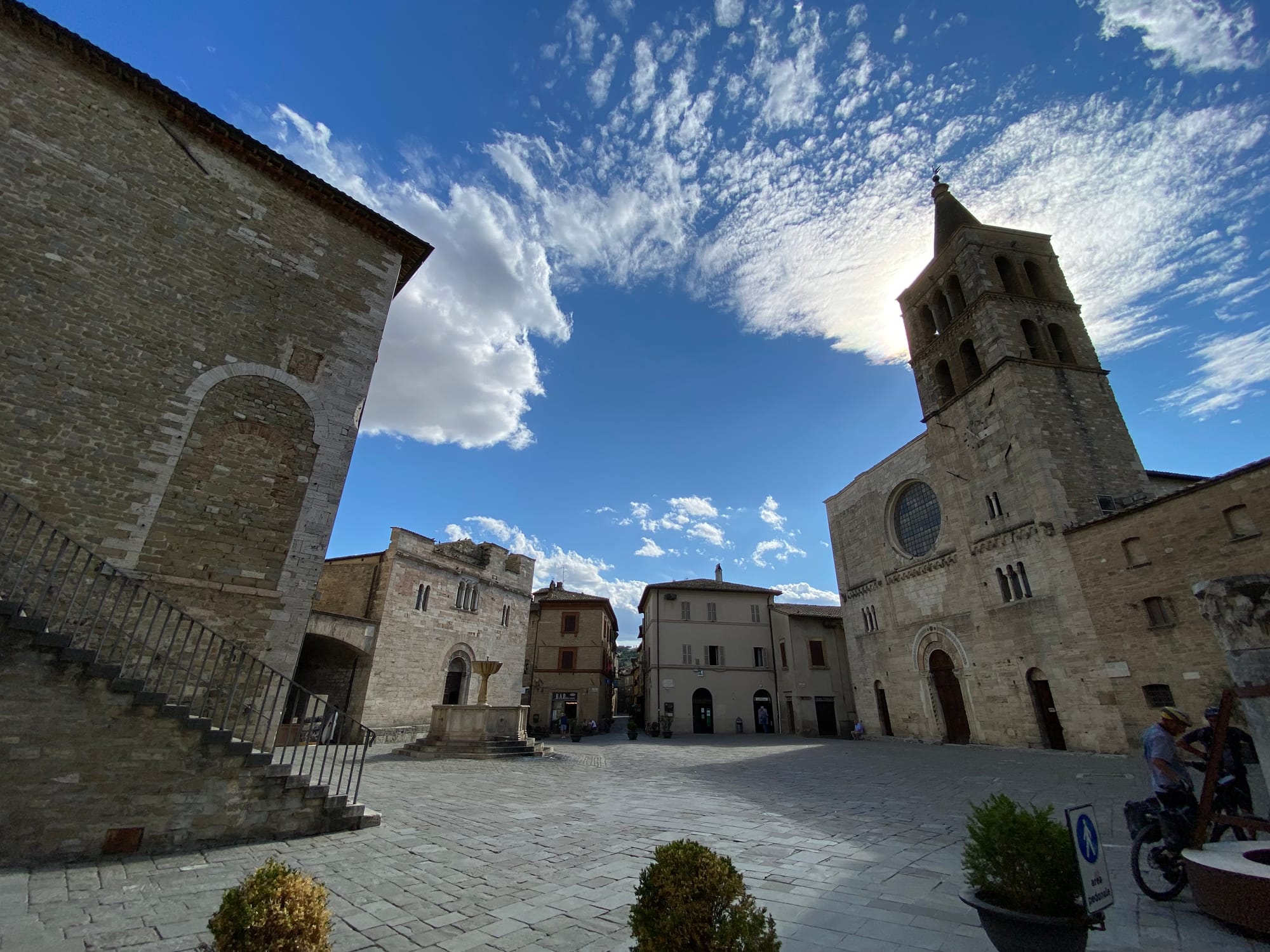
Assisi is one of the most visited places in Umbria, due to its association with Saint Francis and the Franciscan monastic order. Saint Francis is the patron saint of animals and the environment and one of the most venerated Christian figures ever. He was a mystic, poet, monk, visionary, and a rockstar of his time. He led the life of a Robin Hood, giving away his riches to the poor, and advocated for the protection of animals and the environment way before it was popular or considered needed. He expressly became the patron saint of Italy, and this small town is a major pilgrimage site. Churches are the main attraction here, everything is built to accommodate huge groups of pilgrims and the devout atmosphere permeates every corner of the place. If religion is not your thing, I get it, but it is again the chicken and egg dilemma because pilgrims are the original tourists, and thanks to them, we do what we do nowadays, travel, walk, explore, adventure when on holidays. They are the ones who built the foundations of modern travel.
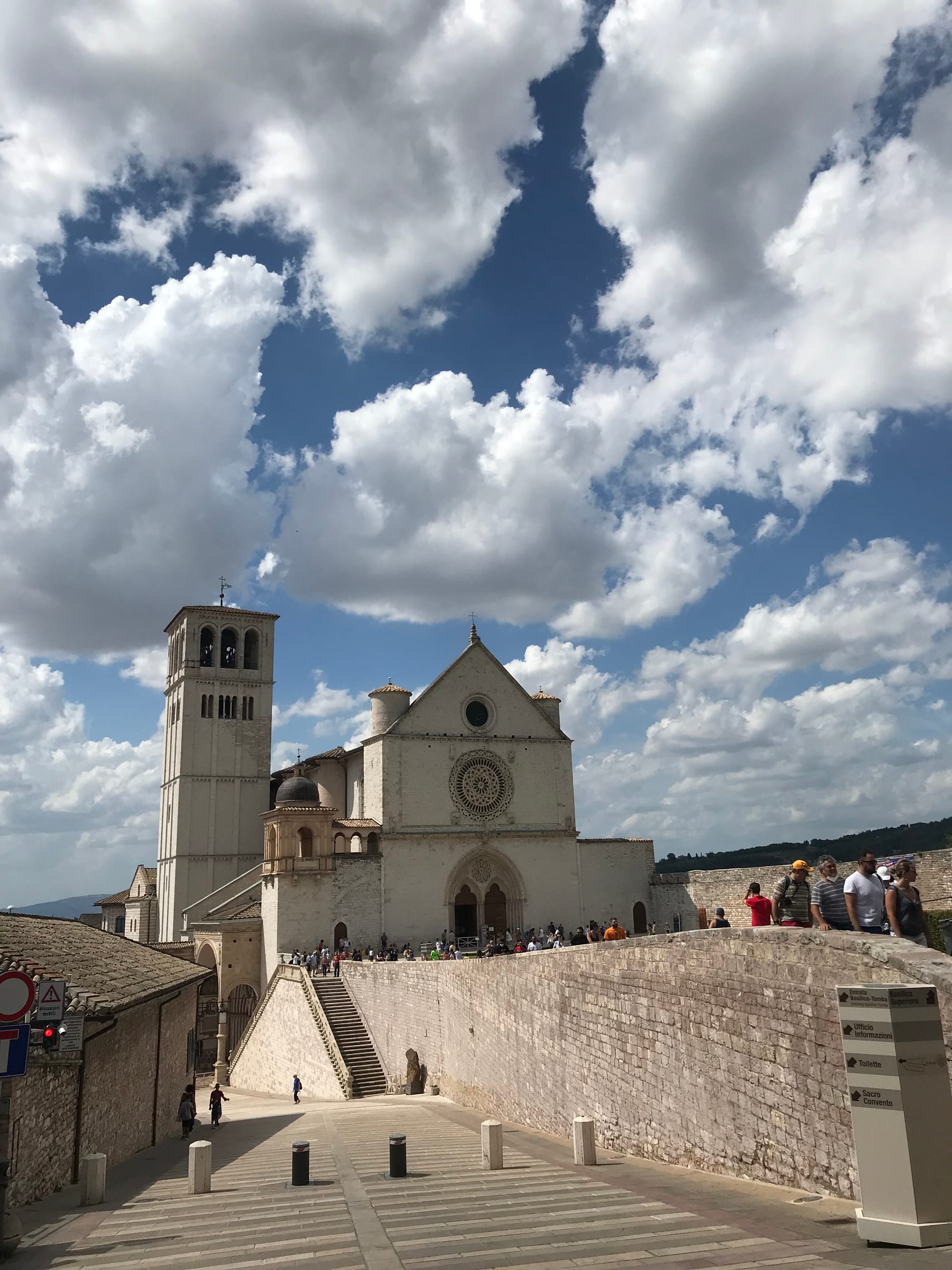
As is the case with many Umbrian settlements, the town is perched on a hill. There is an old half-ruined fortress-cum-playground for kids, overlooking Assisi and it is possible to walk up there and grasp the whole scene. It is so green, and you realize the region does do justice to its nickname: the green heart of Italy. The views of the Umbrian landscape that stretch endlessly, are arresting. This is picturesque Italy at its best. Drunk on beauty, you understand immediately why Saint Francis taught about the unison of the people and the natural world because his hometown exudes that so effortlessly. It is green, lush, in perfect harmony with stone and nature, a town in the loving embrace of countless olive groves. The cathedral, Basilica of Saint Francis is spectacular, and it even contains his tomb. You cannot focus on one fresco to admire but need to take it all in as a composition, and the murmur of chanting all around you does help. You are so immersed in the spirituality of the place, that you feel touched, regardless of the level or intensity of your faith, or the lack of it.

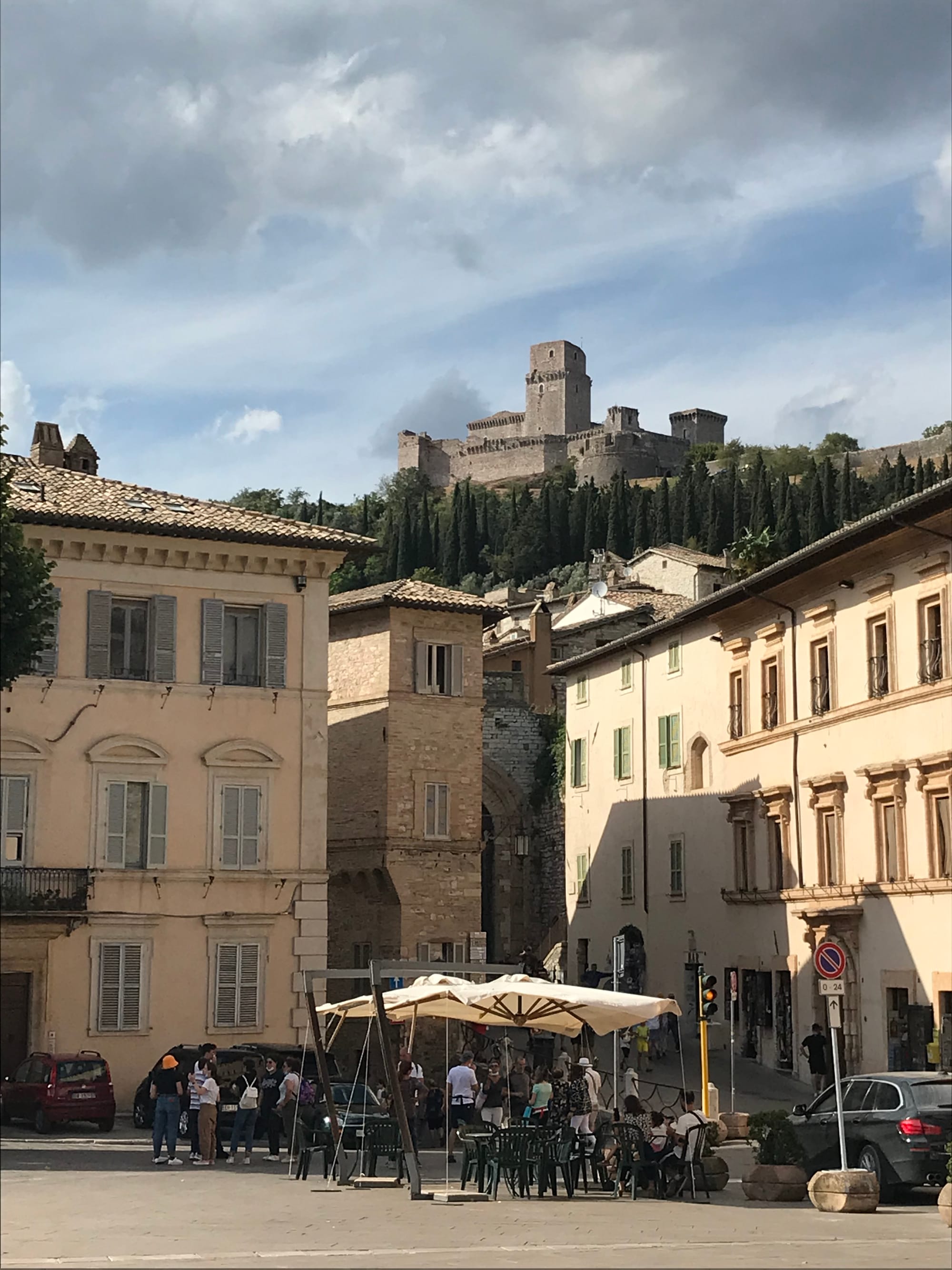
Perugia is the capital of Umbria and it looks like a small fortified medieval village with very long defensive walls, but Perugia is at the same time young, hip, and energetic due to a very busy student life. One of the oldest universities was founded in Perugia in 1308, as well as the biggest university for foreigners in Italy. That is why Perugia is more international than the rest of Umbria. For many a foreigner who fell hopelessly in love with Italy and the Italian language, culture, and lifestyle, Perugia and its summer language courses, were the proverbial small step for humanity, but a giant leap for their own happiness.
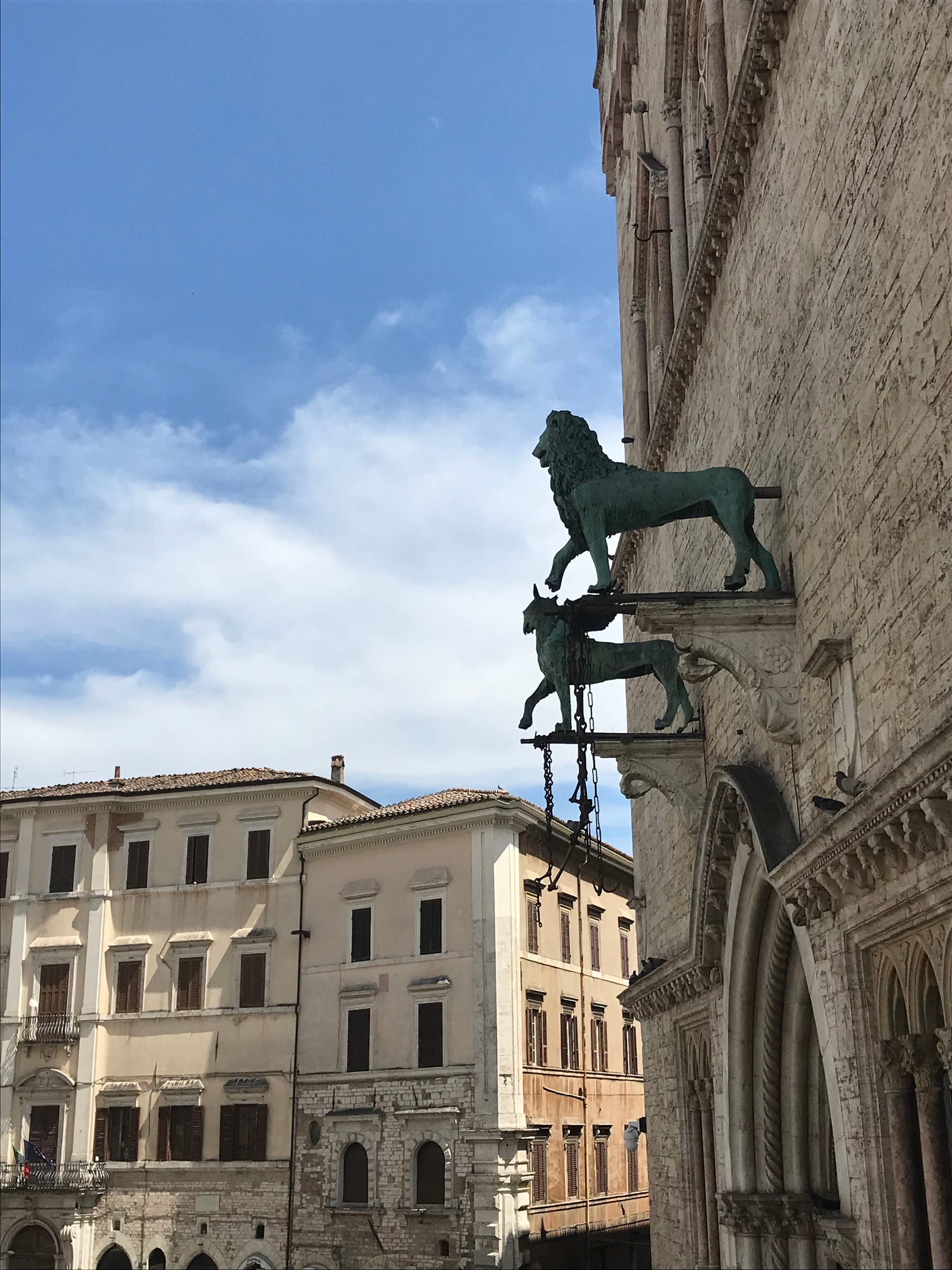
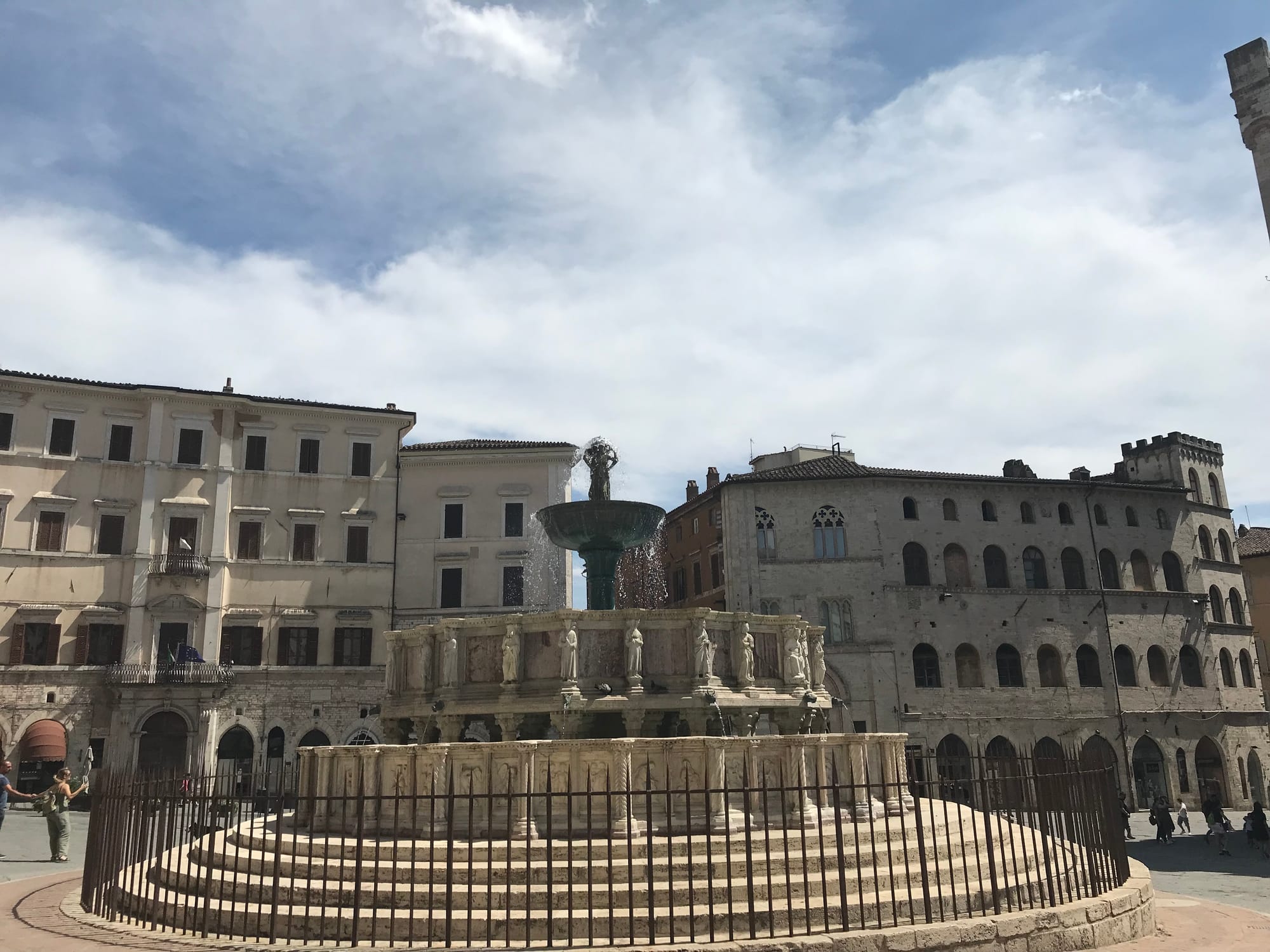
Perugia is a chocolate city because this is where the famous chocolates Baci, were born. The chocolates are famous because they come with a love message inside, sort of like a more poetic fortune cookie. They are shaped like a breast, with a very prominent nipple. You've got to hand it to Italians, they are not afraid or shy of going straight to the matter. The legend has it that a young, married chocolatier woman fell in love with a man who was not her husband, and who also worked in the chocolate factory. So she would wrap the chocolates and send them to him, including a forbidden love message inside. The idea to connect the sexy chocolates to this romantic story stuck to this day. Steamy love affair, I suppose, if a breast needed to be a part of the messaging at some point. But I get it.
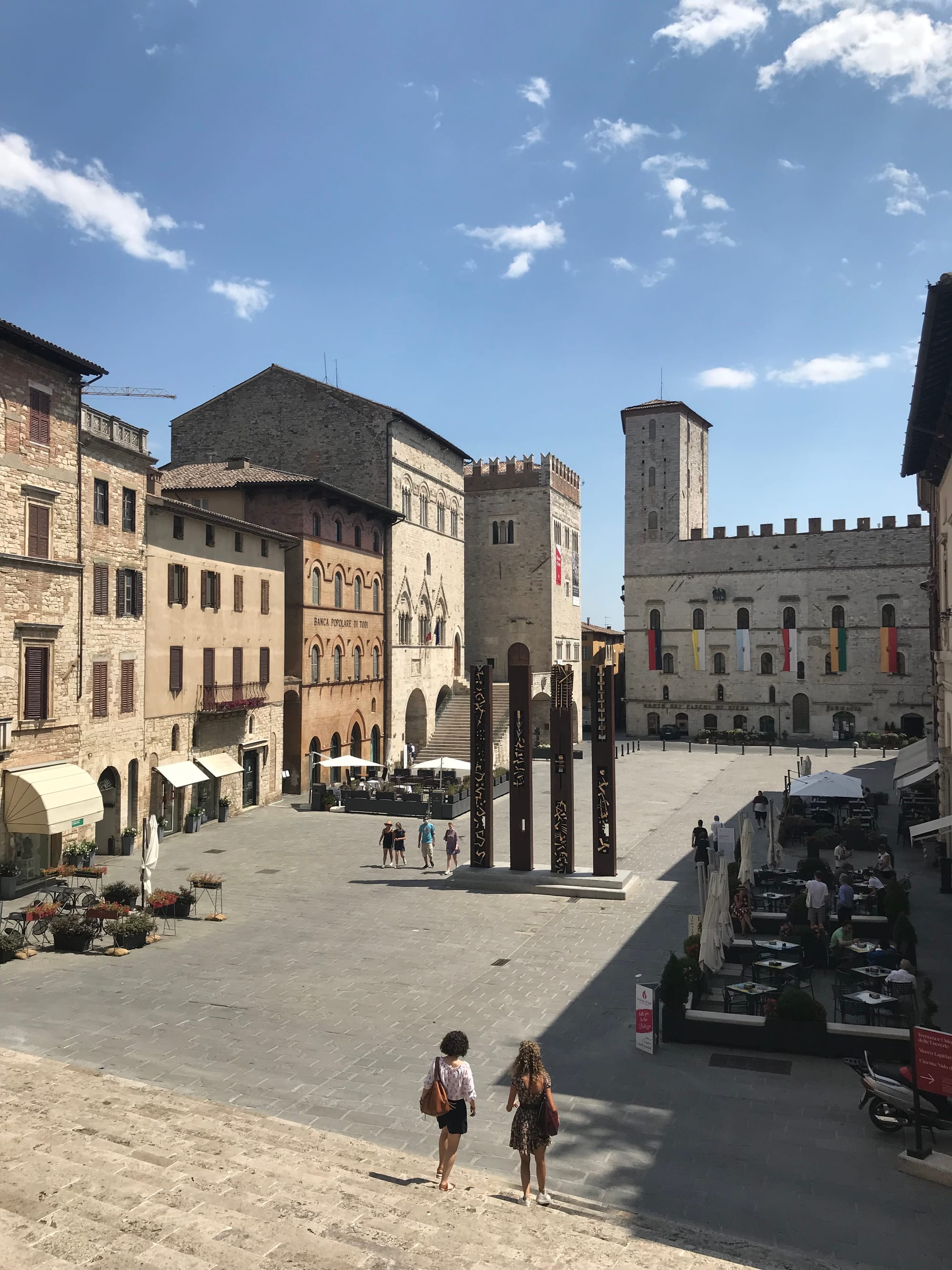
Italians are obviously Catholics, and that comes with so many implications and assumptions, but to be loved, pursued, and courted by an Italian should be in those books titled 100 Things To Experience Before You Die. It would probably be in the top ten experiences if you ask me. Of course, I grossly and inexcusably generalize, but Italians in love don't hold back, don't need space, don't strategize, they are way over the top romantic with grand gestures, passion, fireworks, quoting Divina Comedia for you, or driving thousands of kilometers just to see you. They are all in, and in an Italian love affair, you will collect sentimental, sweet memories to last you until your deathbed. The only drawback of being involved with an Italian is that they inadvertently ruin you for anyone else who might come after them if the relationship fails. You just can't settle anymore. Italians, a rare breed still hooked on love, romance, passions, and true admirers of the opposite sex. Bless them all and pass me a Bacio.
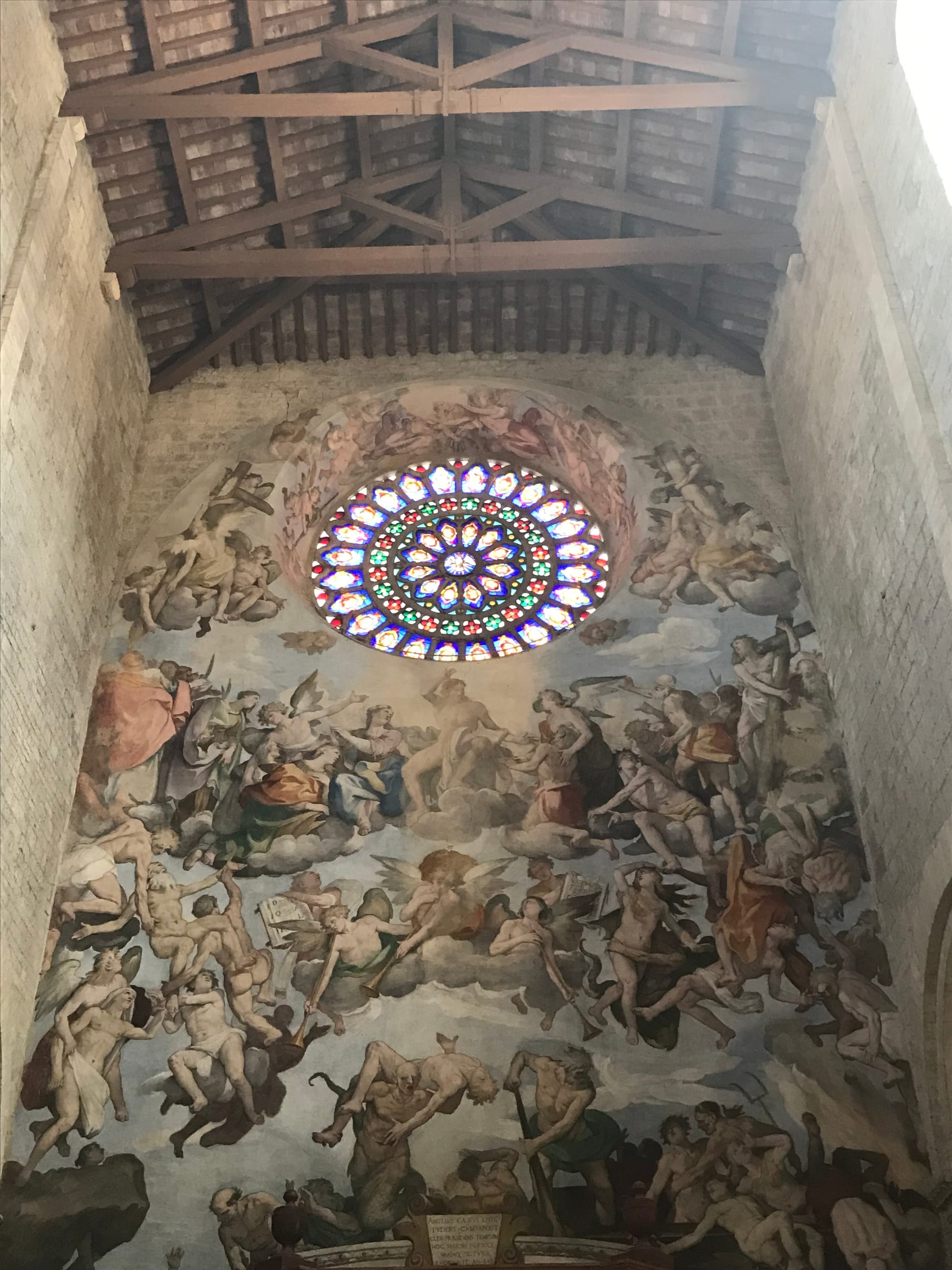
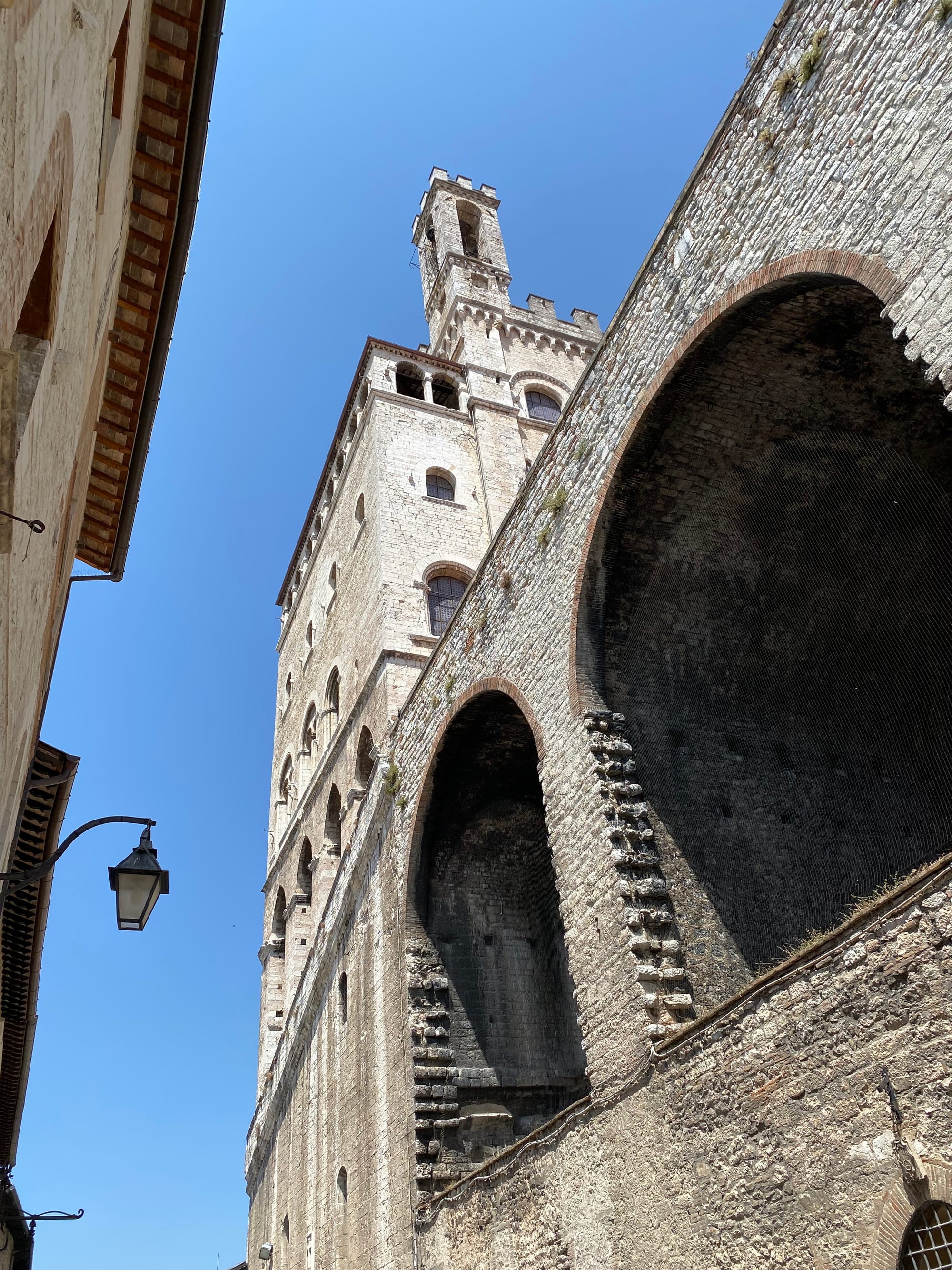
Orvieto is undoubtedly one of Umbria’s most beautiful hilltop towns, standing atop a tuff rock, and announcing its centerpiece attraction from afar, the Orvieto Cathedral. Below Orvieto there is an intricate web of Etruscan tunnels and grottos that were used as wine storages, bomb shelters, and as escape routes during countless sieges. The area around Orvieto is also dotted with Etruscan tombs and vineyards. This is a secretive place that must have witnessed plenty of intrigues, conspiracies, and plottings throughout its history. Its historic center is a labyrinth of small alleyways with nice shops, bars, and restaurants. The city is fairly touristic but still managed to keep its charm, and not turn itself into a suffocating tourist trap.
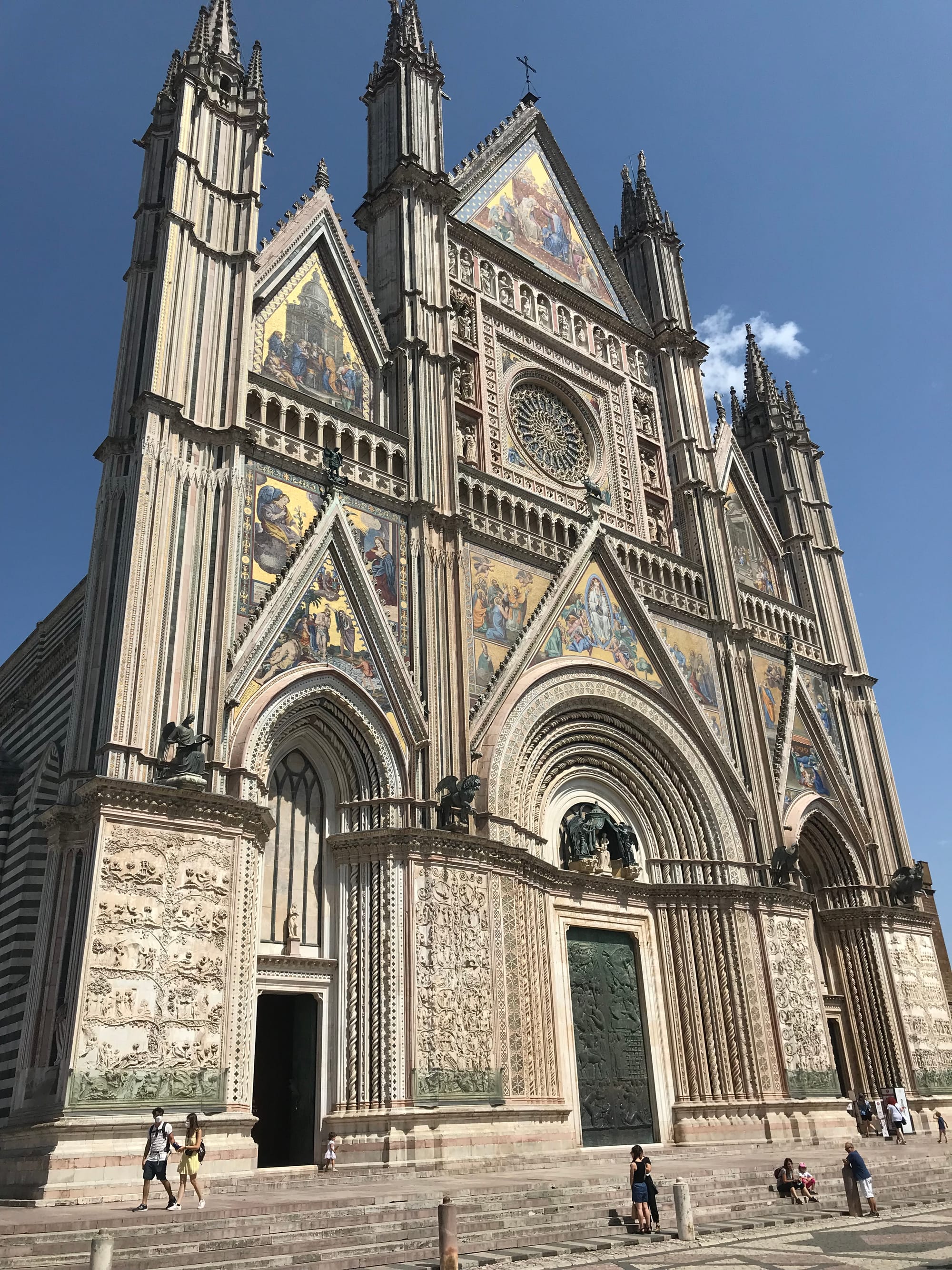
It must have been a godsend in the past, when noble houses and families were at perpetual war or at least involved in a squirmish or two with each other, to have these naturally hard-to-conquer towns to preside over. Built on such a dramatic and striking site, on a vertical cliff, naturally impregnable, Orvieto must have been a strong player once upon a time. The Papal Palace is a remnant of the ages in which various Holy Fathers sought refuge and appreciated the hospitality and protection of Orvieto in their time of political need.

The town’s crowning glory is the magnificent Orvieto Cathedral, the 14th-century Gothic church known for its facade, and Renaissance painter Luca Signorelli’s brightly coloured frescoes in the Chapel of San Brizio. Its stunning mosaic facade is adorned with a sumptuous rose window, it has huge doors, golden mosaics, marbles, frescos, and ethereal light spilling down on you. It is believed that Luca Signorelli's masterpiece, The Last Judgment, served as an inspiration for Michelangelo when creating the Sistine Chapel. The Chapel of the Corporal contains a linen relic inside, and large frescos depicting prophecies and miracles. In the Chapel of San Brizio, Signorelli's masterpiece shows the scenes of the preaching of the Antichrist, the end of the world, and the Last Judgment. It is a larger-than-life artistic pinnacle, the details of which would suffice to admire for years and you'd still keep on finding quirky little scenes, faces, and allegories to unlock. My personal favourite is the depiction of Dante Alighieri, surrounded by books, escaping in literature amidst the phantasmagoric images of the world. Any resemblance to actual events, locales, or persons is coincidental.
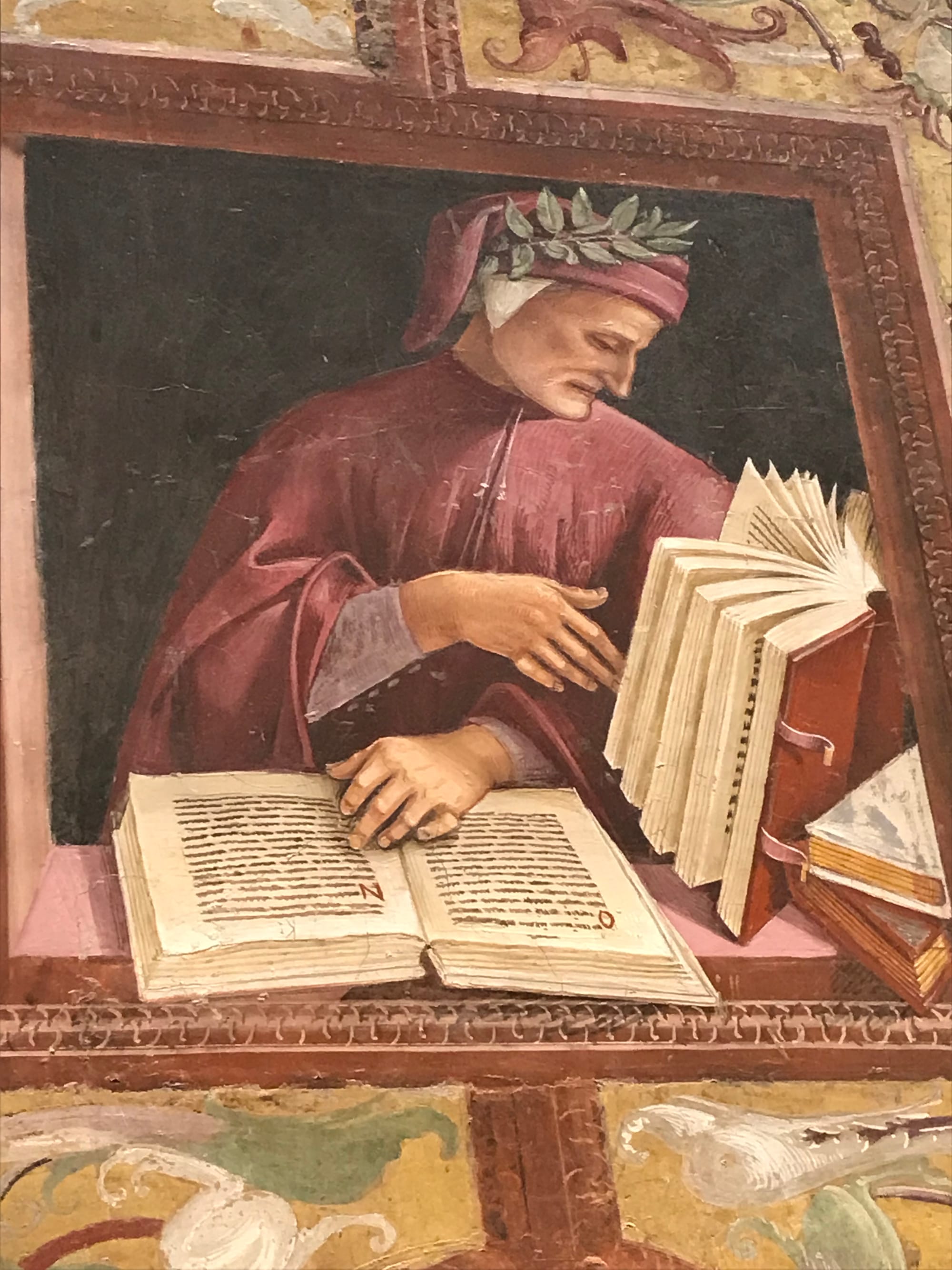
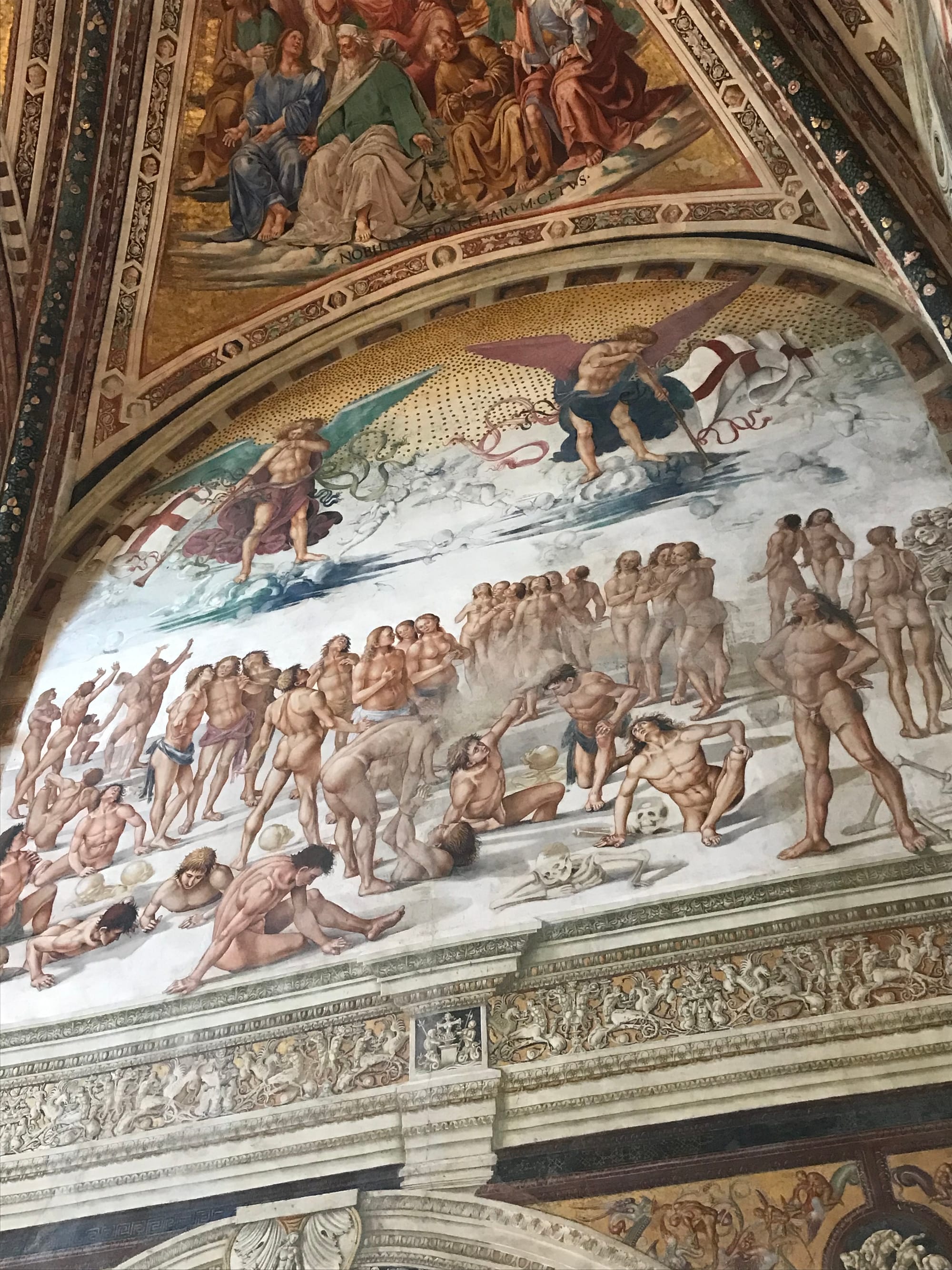
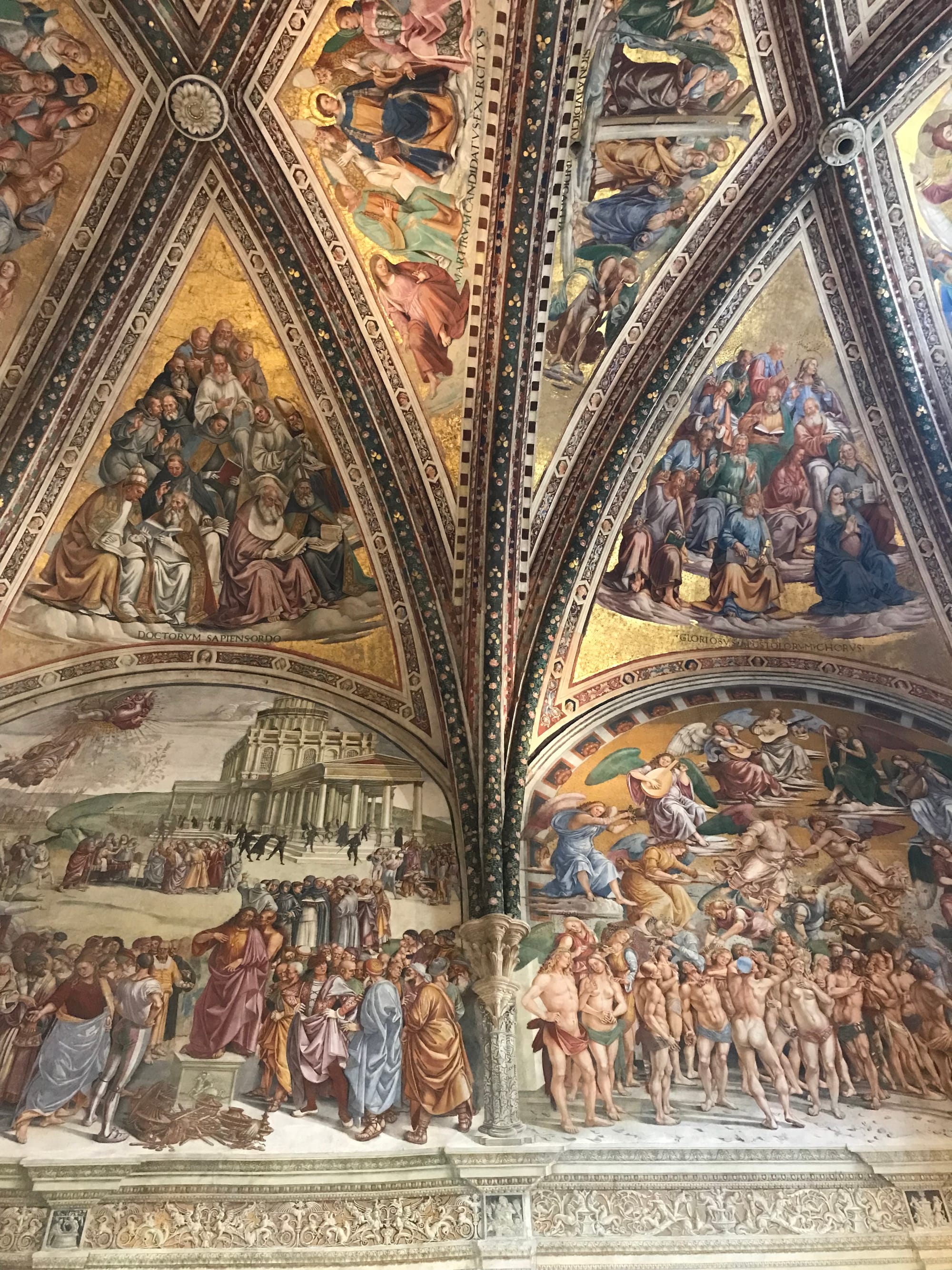
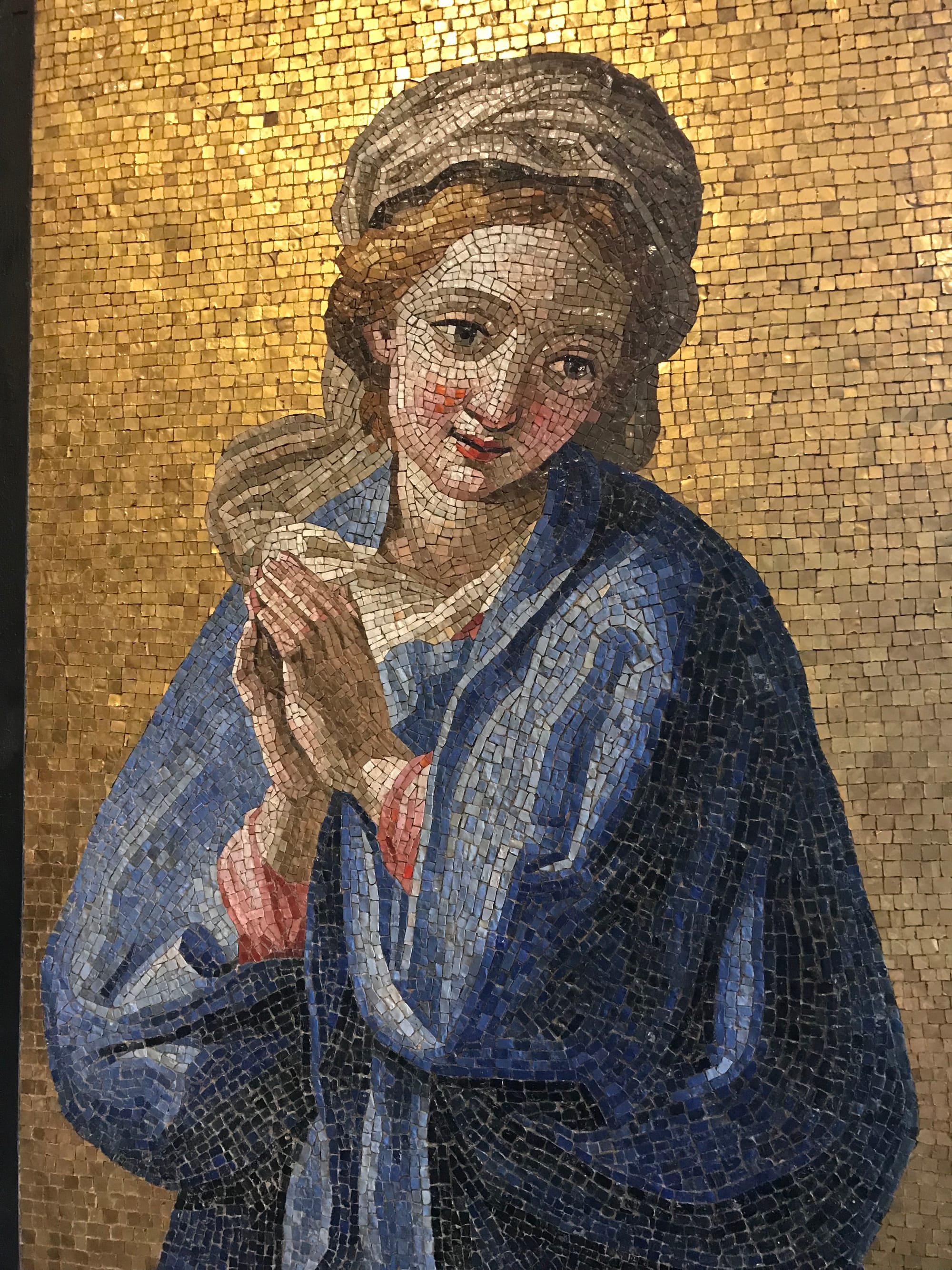
Spello is a representative of myriads of tiny Umbrian villages that cannot compete with bigger towns, but are still hopelessly, charmingly lovely. Spello is on a hill and quite a walk going up, it is full of little alleyways adorned with flowers between beautiful medieval buildings. From the top, the views around are beautiful, a tapestry dotted with olive trees. Spello is famous for its flower festival and blooming decorations and you will see more flower pots here than anywhere else. The quarters and neighbourhoods, I suppose, get together and organize and plot how to make their street or square that beautiful, in a joint effort, because it is simply too cute, too resplendent to happen by chance. However, the flower displays don't seem performative, there is too much work and care in the arrangements, so I believe they are not put out there for others but that the inhabitants of Spello are doing it for themselves.
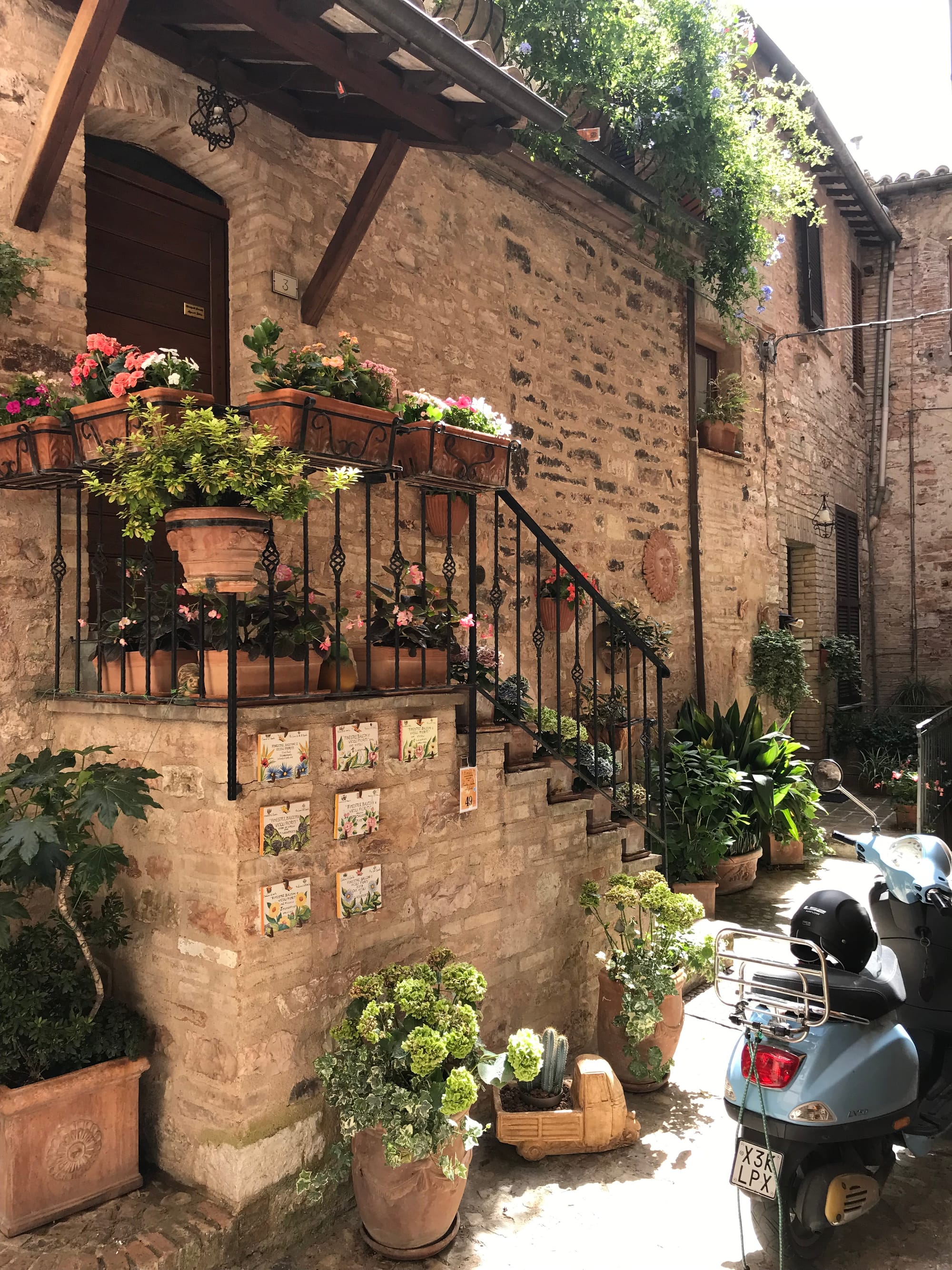
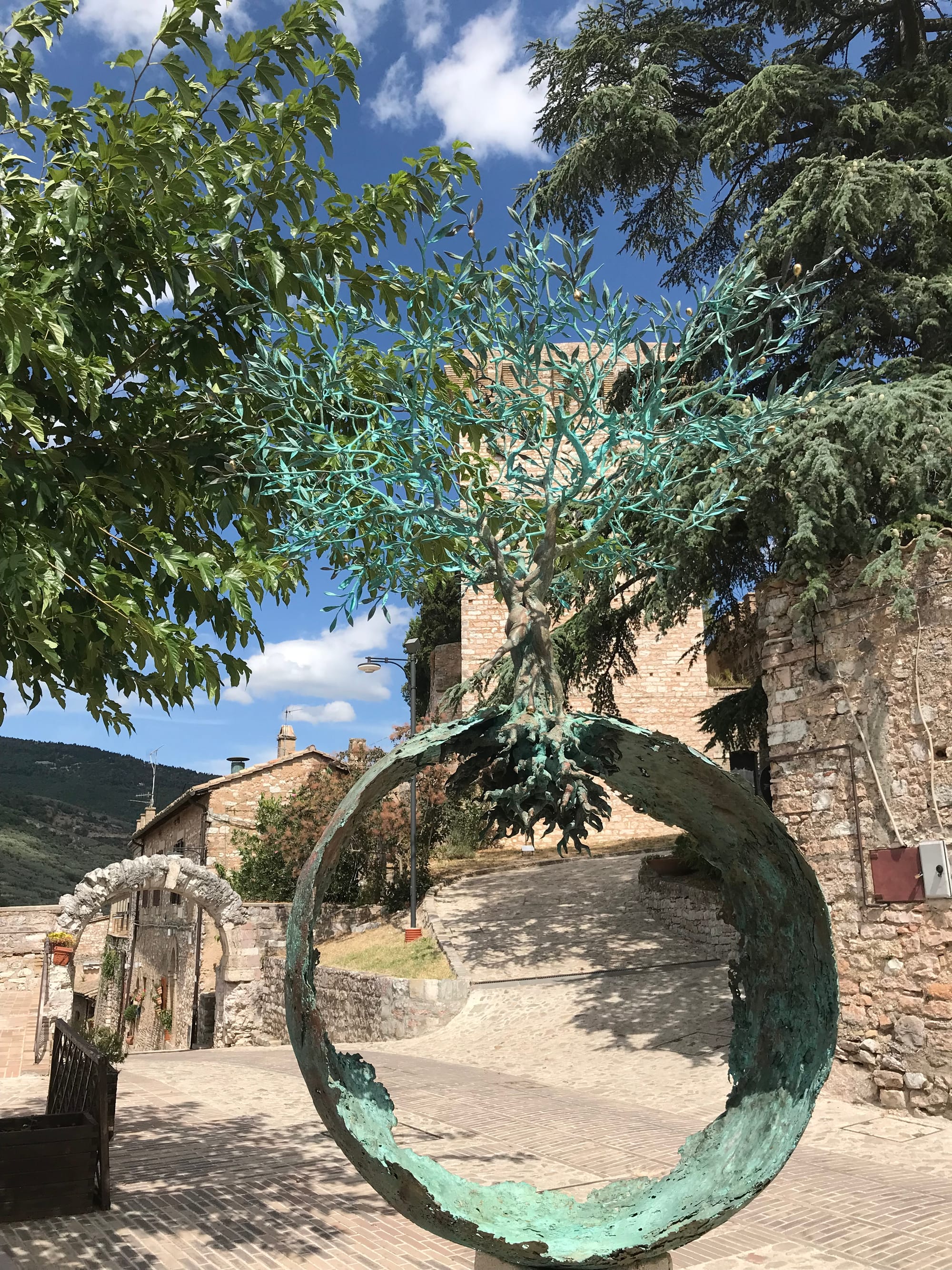
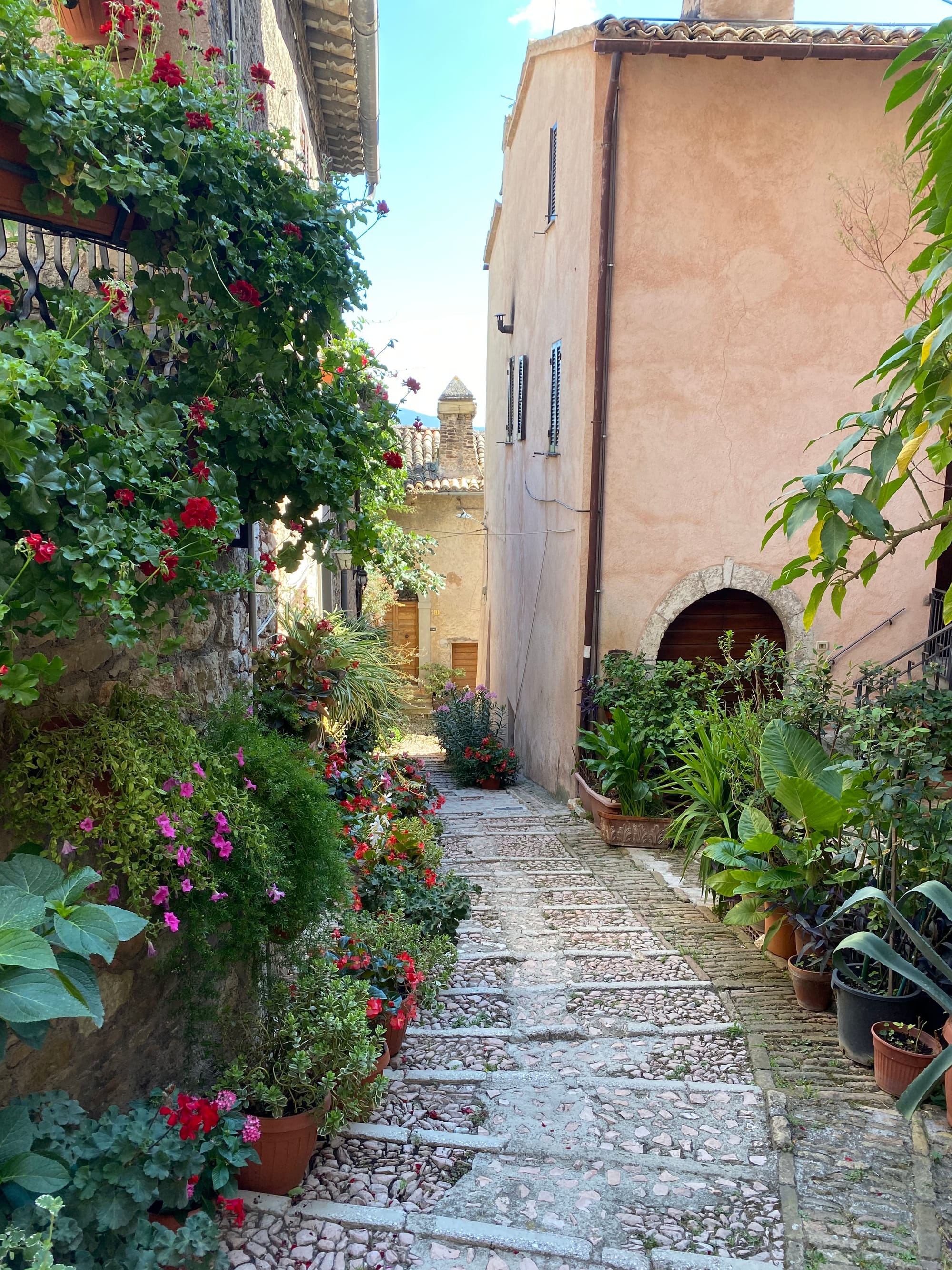
Civita di Bagnoreggio is technically in Lazio, but we visited it within the same Umbrian holiday. It is a quintessential rustic Italian town on the hill. It feels like you have abandoned modernity once and for all when you start approaching it. It is nothing less than magical, a village that seems as if it is levitating in the air, safely cuddled in the clouds. You reach it via a long, thin sliver of a bridge, and once there, you feel as if you are in Winterfell. The original inhabitants are long gone, no one lives there anymore because it is simply too inconvenient now. But it is more than worth a stroll around, gelato in hand, and taking in the theatricality of arriving there. You will enjoy the views from the bridge because it is an unfathomably beautiful and unmissable experience. To be frank, we ran across the bridge, because that is what our toddler decided to do and we had to follow him. So, it is time for another visit, to walk the bridge at leisure this time, I hope.
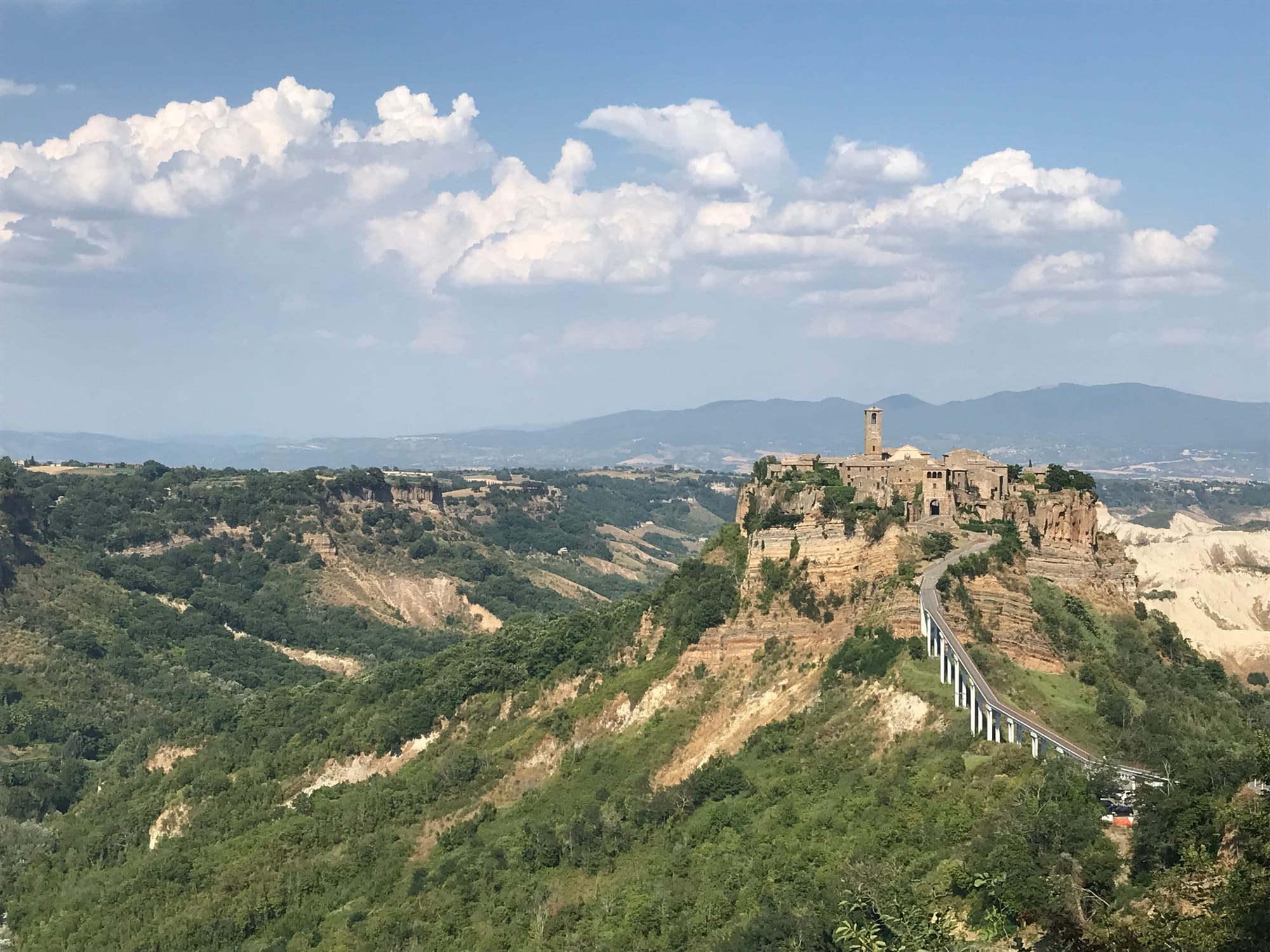
The inhabitants of Umbria know how to enjoy their food, and they like it hearty and filling. It makes sense because Umbria is an agricultural region, and working the land is not really complementary with a light diet. Additionally, it must have been strenuous climbing up the hill to reach the Umbrian towns before they provided shuttles and installed the elevators that bring the tourists upwards nowadays. After all that drudgery, the least to expect was an abundant meal. As a result of that tradition, in Umbria you will eat truffle dishes, lots of game meat, pulses, cured meat delicacies, and drink quality wines. Pastas to taste are regional shapes of pasta that are rarely, if ever seen on the shelves of large Italian supermercati. Think umbricelli with ragù or cinghiale (boar) sauce. It is all worth the calories. One peculiarity of the region is that bread in Umbria doesn’t have salt, because the taxes on salt were too high in the past. That still doesn't explain why they don't make it with salt today, since bread is the only food that is not delicious in Umbria. And that about sums it up. The only negative thing in Umbria.
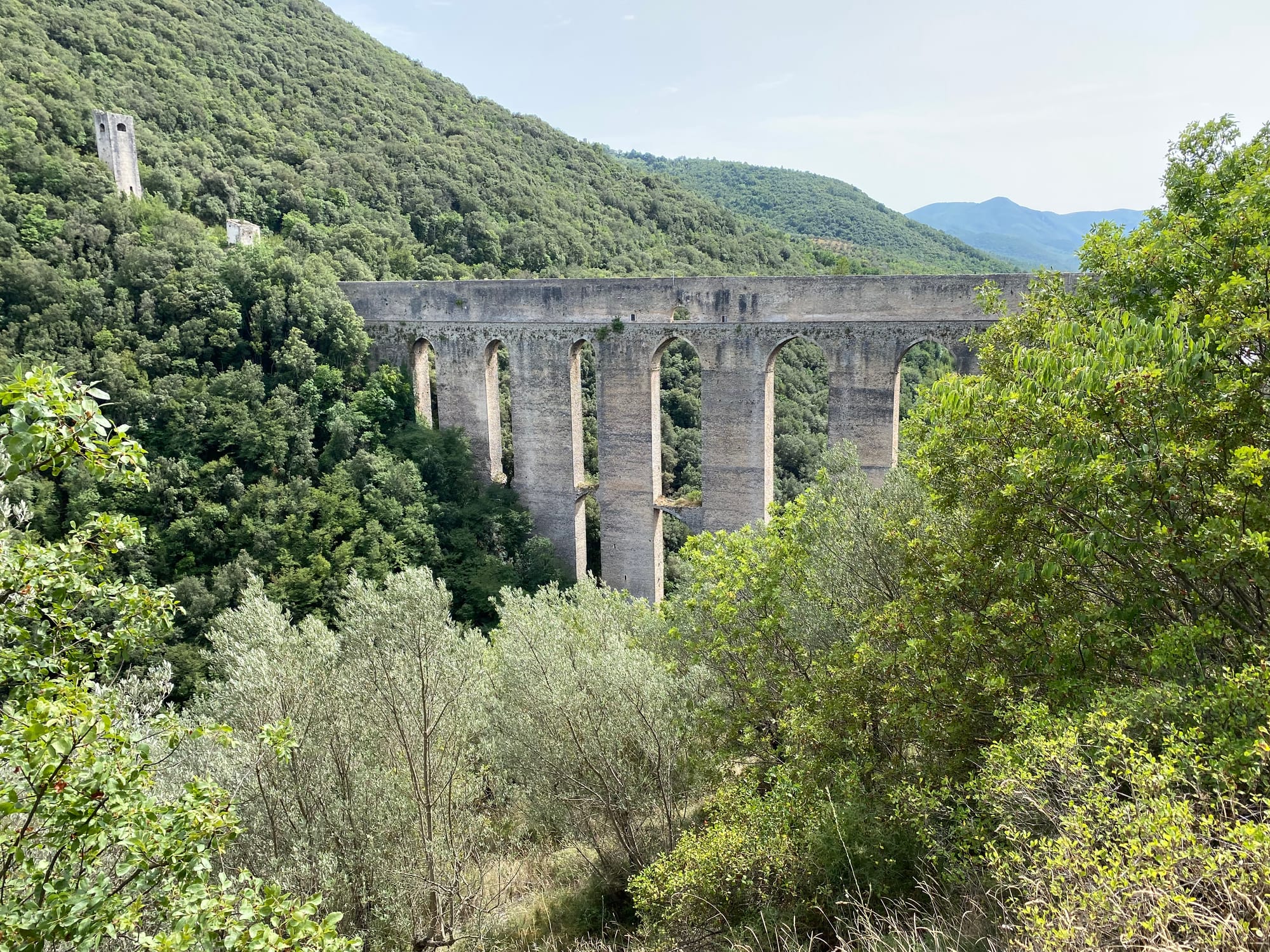
I like to write about travel experiences because that makes me relive the beauty of travel all over again. Being in extraordinary places also reminds me of the continuity of time and space and how we all share so much. The same views adored by Saint Francis are enjoyed by the visitors of Assisi nowadays. The same frescos, same waterfalls, same sunshine. The land, the nature, the art, will remain long after us, even after the best of us. And even the most ordinary of us are invited to participate in the beauty of being alive, being present, of being a part of nature's grandeur. It is humbling, it is exhilarating, it is a privilege, and I will never take travel for granted.
